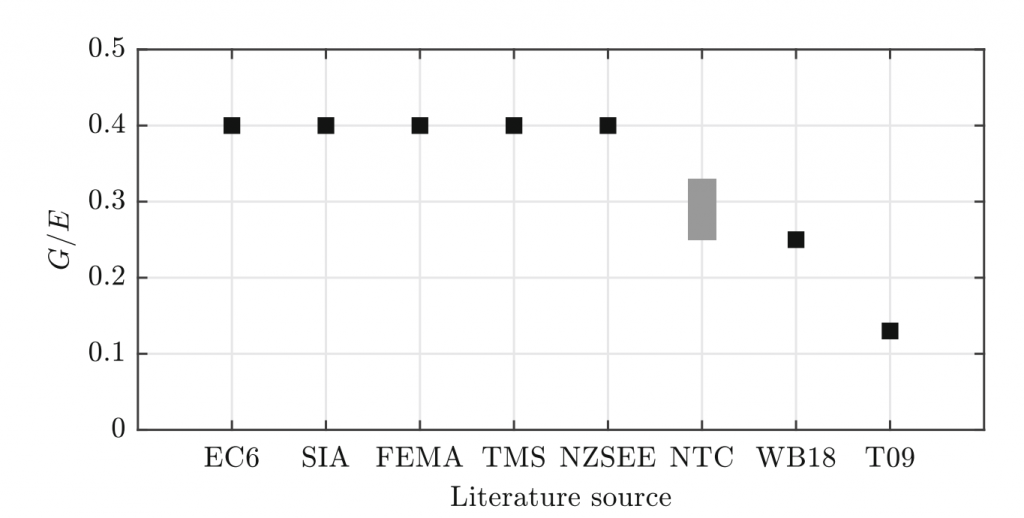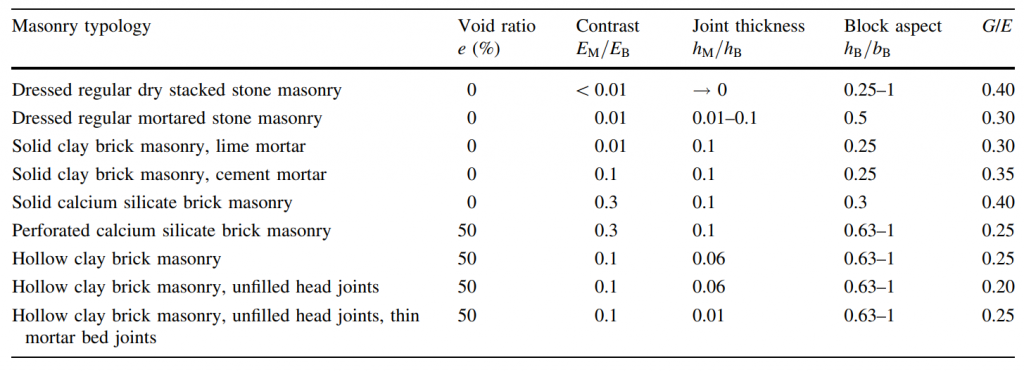

- Article:
- The ratio of shear to elastic modulus of in-plane loaded masonry [journal link]
- Dataset: [dataset link]
- Funding:
- Swiss National Science Foundation
- Swiss Federal Office of the Environment
- Construction Department of the Canton Basel-Stadt
In the design of unreinforced masonry structures, accurately determining the stiffness of walls is crucial, which depends on the masonry’s elastic (E) and shear (G) moduli. Present building codes offer empirical methods to estimate the elastic modulus of masonry and suggest a G/E ratio, typically assumed to be 0.4. However, this ratio lacks solid scientific backing, leading to potential inaccuracies in representing masonry’s shear deformation in current standards. We developed precise formulas for the G/E ratio in running-bond masonry, considering factors like the thickness of joints and walls, and the orthotropic nature of blocks. These formulas, grounded in the geometry and elastic properties of blocks and joints, have been validated through comprehensive 3D finite element analysis, demonstrating reliable results. The study finds that for contemporary masonry using hollow clay bricks, the G/E ratio ranges from 0.20 to 0.25. In contrast, for historical masonry types like dry stacked or mortared stone, as well as solid clay brick masonry, the ratios are calculated to be between 0.30 and 0.40.

